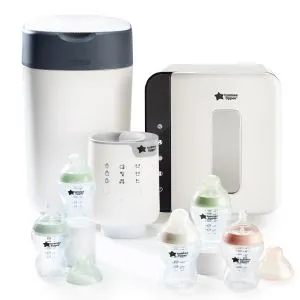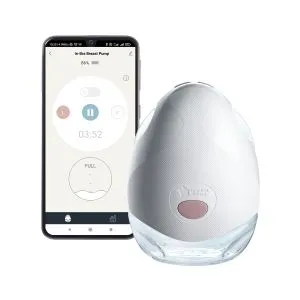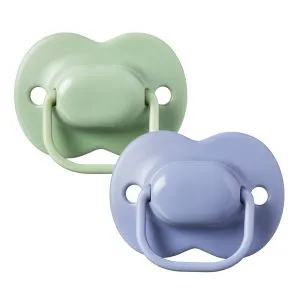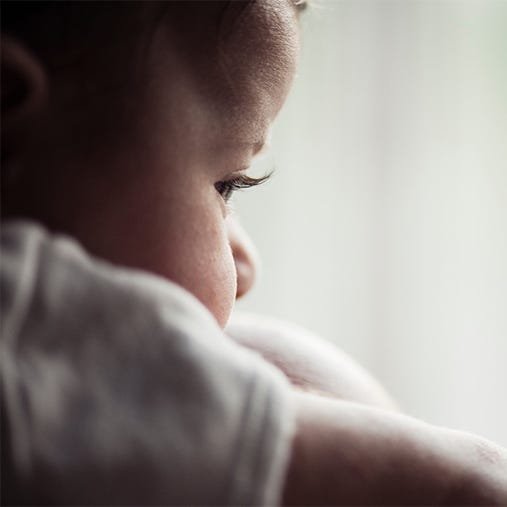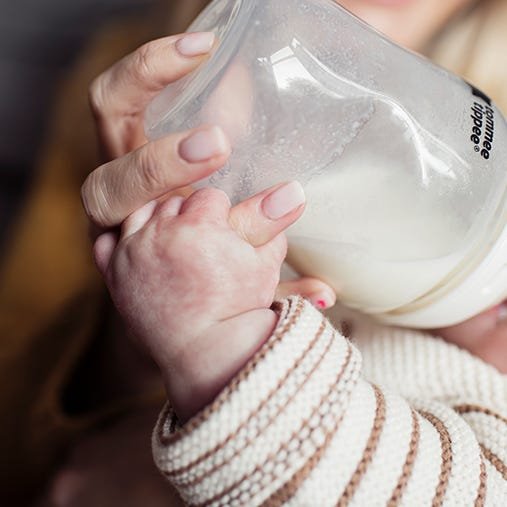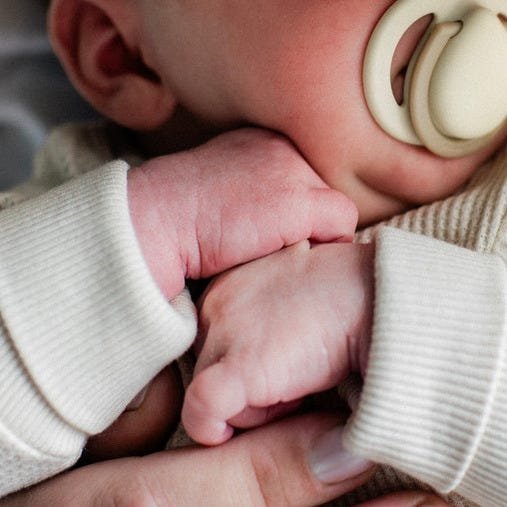Do I need to use conditioner?
Baby-specific hair conditioners and detangling sprays can really help if your little one's hair is prone to tangles and can make combing and caring for it a little easier. If you do use a baby-friendly conditioning product, only use a tiny amount, and smooth it through their hair using your fingers or a wide-toothed comb to loosen any knots.
How to brush a baby's hair
If your little one has long, thick hair, it may become tangled or matted. To keep it tangle-free, you can use a wide-toothed comb or a gentle, soft-bristled baby brush on their hair to gently detangle it, starting from the ends and working upwards.
How to cut your baby's hair
If your baby's hair grows long and starts to get into their eyes, you may want to trim it a little to keep them comfortable. Trimming their hair also means there's no need for clips or hairbands that can sometimes cause irritation.
If you want to trim some length off your baby's hair, ask for help from a friend or family member if you can, and choose a time when they're calm, have been fed and aren't too tired. It can also help to give them a small, soft toy to play with as you slowly trim bit by bit.
What is cradle cap?
Cradle cap is a common condition that's characterised by crusting and white or yellow scales on a baby's scalp. It's not contagious and isn't caused by poor hygiene. It usually appears as a patch on a baby's scalp that's covered with yellow or brown coloured flakes.
When a baby has cradle cap, it can help to...
-
Wash their hair more frequently using a baby shampoo that's specially designed to treat cradle cap.
-
Lightly massage their scalp with an emollient moisturiser to help loosen the scales.
-
Gently brush their scalp with a soft baby brush and then wash it with baby shampoo.
Don't...
- Be tempted to pick at their cradle cap, as this could potentially lead to an infection.
- Use olive or peanut oil.
- Use soap or adult shampoos
It's not usually harmful to your baby and often clears up by itself after a few weeks or months and doesn't normally cause itching or discomfort to your baby. However, if your baby's scalp becomes red, inflamed or swollen, or you notice signs of a possible infection, you should seek medical attention.
Why is my baby's hair falling out?
If your baby was born with hair, don't be alarmed if it falls out at some stage. Most hair loss happens in the first six months of life, often peaking at about three months. This is common and known as the telogen stage.
Friction from rubbing the back of their head against their mattress as they sleep or lie on their back can also cause a baby's hair to fall out. This hair usually starts to grow back once a little one can roll over independently, usually at around seven or eight months.
Your baby's hair will grow back and may even grow back with a different colour or texture according to your baby's hormones. Light hair can come in darker, straight hair can come in curly, and thick hair can come in thin.


